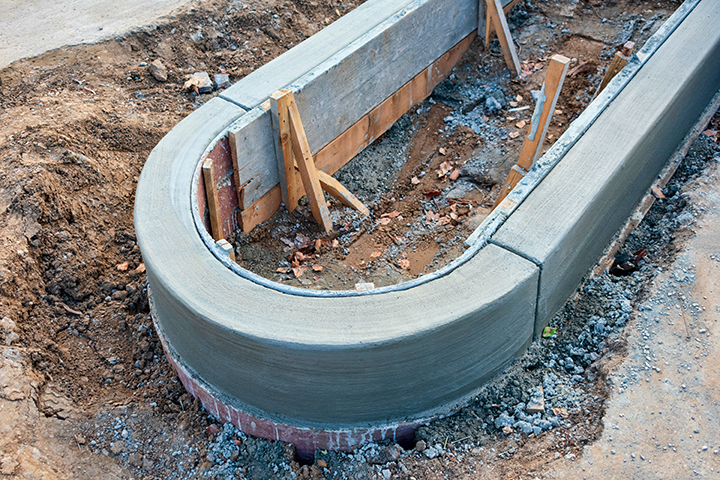Curbs do more than outline a parking lot—they guide traffic, manage drainage, protect landscaping, and define pedestrian zones. For commercial, retail, multi-family, and government properties in Seattle, Bellevue, Tacoma, and surrounding cities, proper curb installation plays a key role in safety, durability, and compliance.
Why Curb Installation Matters
Curbs add structure and organization to paved surfaces, whether concrete or asphalt. However, if not installed correctly, it is often one of the first features to fail, leading to drainage problems, pavement edge deterioration, and accessibility issues.
1. Protect Pavement Edges
Uncurbed pavement edges degrade faster due to stress from vehicles and erosion. According to the Federal Highway Administration, pavement edge raveling can reduce surface lifespan by up to 30%. Curbs create a physical boundary that reduces edge failure and limits maintenance needs.
2. Improve Drainage Control
In a region like the Puget Sound—with frequent rain and storm runoff—curbs help direct water into catch basins and away from building foundations. Poorly drained lots can lead to pooling, pavement damage, and pedestrian hazards. Curbs form part of a managed stormwater system, especially in sloped lots in Redmond, Kent, or Everett.
3. Enhance Pedestrian Safety
Curbs separate vehicle and pedestrian zones, providing a visual and physical barrier. In high-traffic areas like retail centers in Kirkland or multi-family complexes in Auburn, this reduces accidents and improves accessibility. Curbs also support ADA compliance by helping guide wheelchair ramp placement and elevation.
4. Guide Traffic and Improve Appearance
Curbside lines shape the flow of cars through lots and streets. They help define parking islands, walkways, and fire lanes. A well-laid curb improves traffic management and adds visual order to your site, making it easier to navigate and more attractive.
Types of Curbs and Where to Use Them
The right curb depends on location, usage, and function:
- Straight Curbs – Durable and commonly used in drive lanes and parking stalls.
- Rolled Curbs – Allow vehicles to drive over when needed; useful in residential-style complexes or mixed-use spaces.
- Integral Curbs – Poured simultaneously as adjacent surfaces, offering structural strength and clean transitions.
Consider Maintenance and Long-Term Value
Poorly installed or damaged curbs can compromise adjacent pavement and create hazards. Cracked curbs can channel water incorrectly or crumble under seasonal freeze-thaw cycles. These issues can become liabilities in cities like SeaTac and Renton during wet months.
Investing in quality curb installation and repair reduces risk, preserves adjacent pavement, and keeps your site compliant and organized. Whether you're planning new construction or maintaining an existing lot, curbs are a minor feature with a significant impact.
Proper curb installation plays a key role in safety, durability, and compliance for commercial, retail, multi-family, and government properties in Seattle, Bellevue, Tacoma, and surrounding citie
Subscribe to our newsletter
Lorem ipsum dolor sit amet, consectetur adipiscing elit. Suspendisse varius enim in eros elementum tristique.



